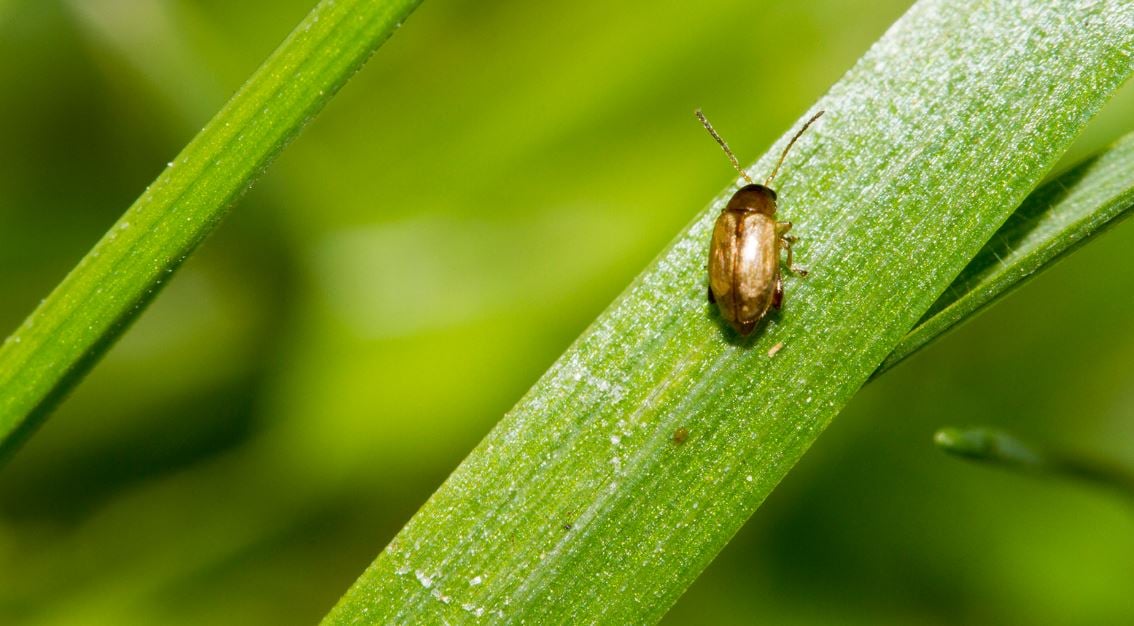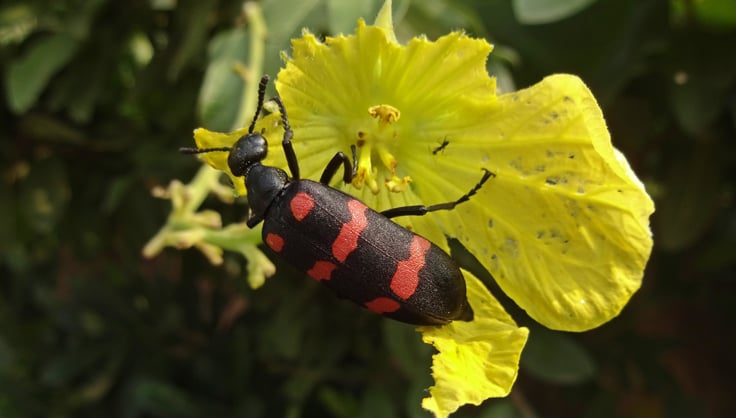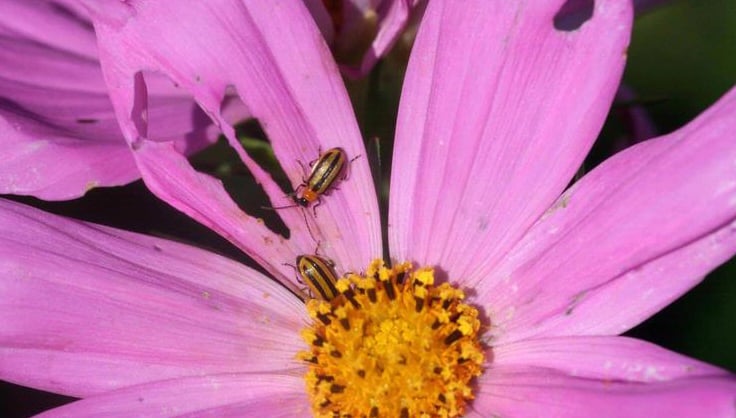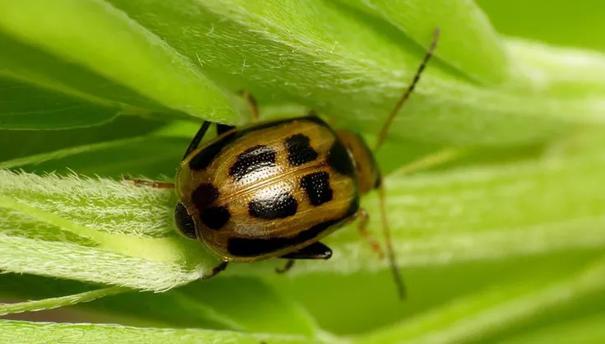Flea Beetle
 Flea beetle Photo: Nikk Valentine
Flea beetle Photo: Nikk ValentineThese tiny beetles "pepper" leaves with multitudes of tiny holes as they feed. Flea beetle feeding results in stunted, distorted growth and spreads disease, including blight and bacterial wilt. If flea beetle damage is severe enough, it can kill a young plant. Almost all plants are susceptible, especially as tender seedlings, and flea beetles have a special preference for plants in the cabbage family.
Flea beetles get their common name from their tendency to jump like fleas when disturbed. Several species are garden pests. Markings and coloration varies, though most are shiny black and about 1/16″ long.
Adult flea beetles emerge in spring after overwintering in plant debris. They feed on weeds (pigweed is a favorite) until more succulent garden crops are available. The adults lay eggs on the soil surface, and their larvae feed on roots of most garden plants. Flea beetles thrive in hot, dry conditions. There may be one or two generations of this pest each year and they are found throughout North America.
Prevention and Control
- Keep young seedlings covered with garden fabric until the first generation of adult flea beetles in your area dies off. Delaying planting can also help.
- Plant susceptible crops in the shade of taller crops; flea beetles prefer full sun.
- In dry climates, keep the soil surface moist to make your garden less attractive to egg-laying adults.
- Loosen the top layer of soil several times each week to disturb larvae.
- At the end of the growing season, eliminate opportunities for adults to overwinter by removing plant debris and similar hiding places.
Last updated: 03/18/2024
Print this Article:
Related Articles
Get the Dirt
Stay up to date on new articles and advice. Please fill out the information below.



